Utility Rooms of Tarantul-class Missile Boat
I descend from the control room to the superstructure corridor. Directly below the wheelhouse is the commander's cabin, which we have already been to, so we go in the direction of the stern.
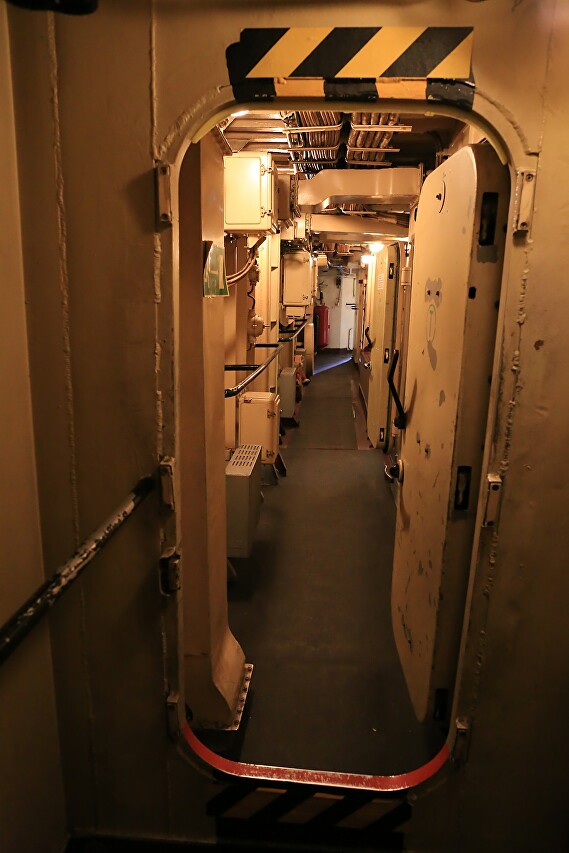
The first room behind the commander's cabin is the galley. For a crew of 38 people, it seemed too small. The electric stove does not differ much in size from the usual household kitchen stove. Soviet designers traditionally did not care much about the comfort of the crew, including food, so Soviet sailors (and even those only sailors) were not spoiled by culinary delights. But it is hard to imagine that even the" socialist " Germans ate by such standards.
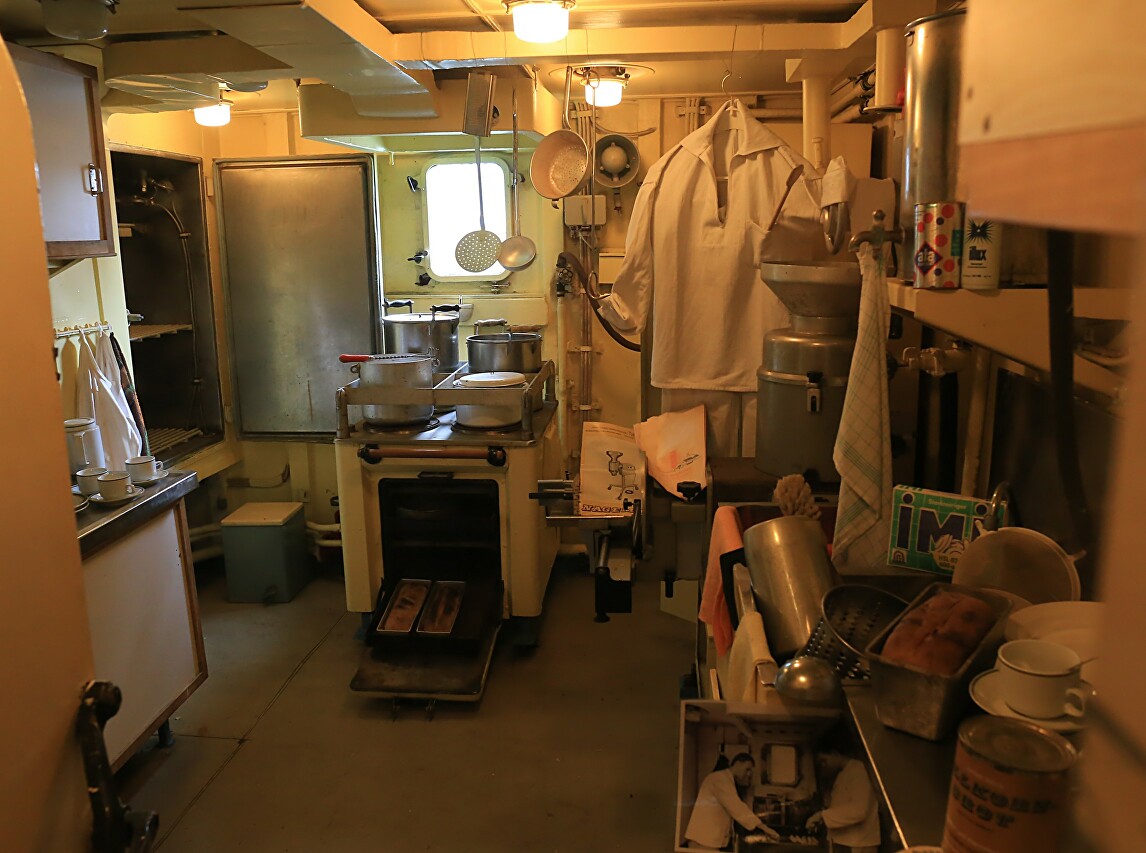
Next to the galley door is a hatch to the lower deck, closed by a grate. Below it, we see the power plant control post, which is reflected in the mirror. This hatch was also used for ventilation, and if the communication with the wheelhouse is damaged, you can give voice commands to it.
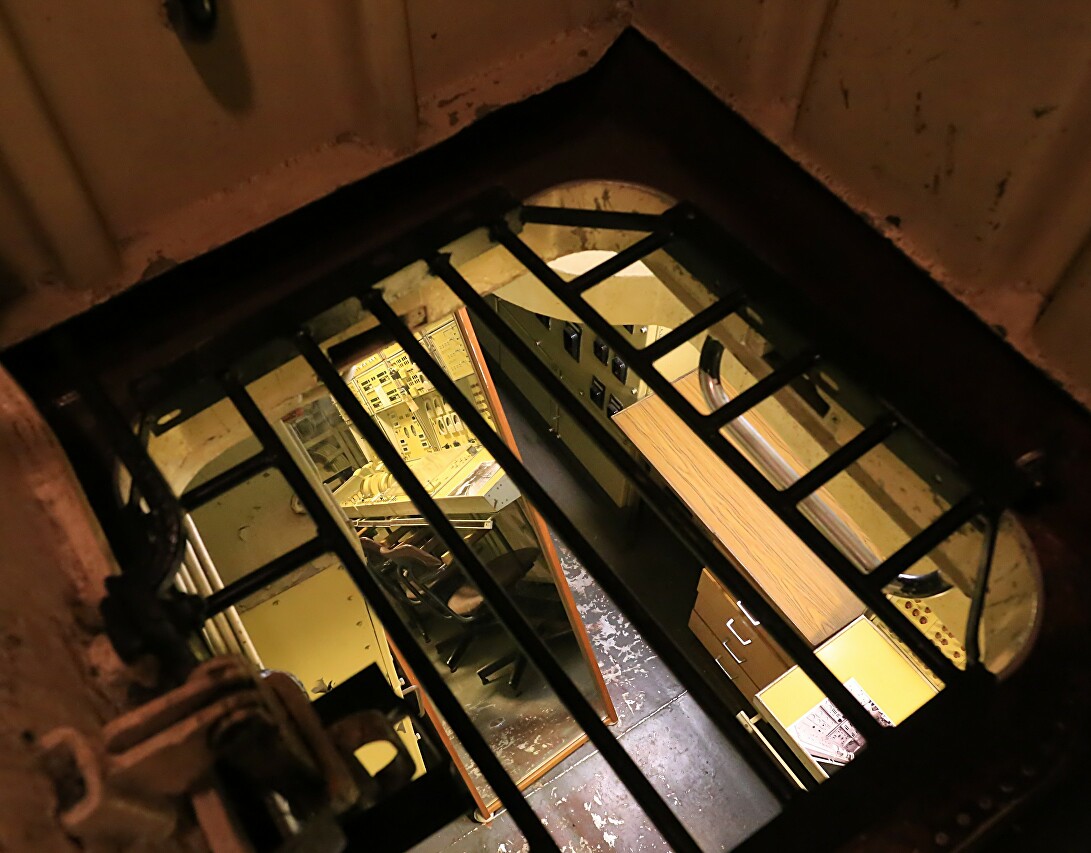
Behind the galley are the chimneys and ventilation shafts of the two engine rooms. In the bow there are two mainline gas turbine units with a capacity of 4000 hp each, in the aft two afterburner turbines with 11000 hp each, their exhaust gases go out into the holes on the transom, creating some jet thrust.
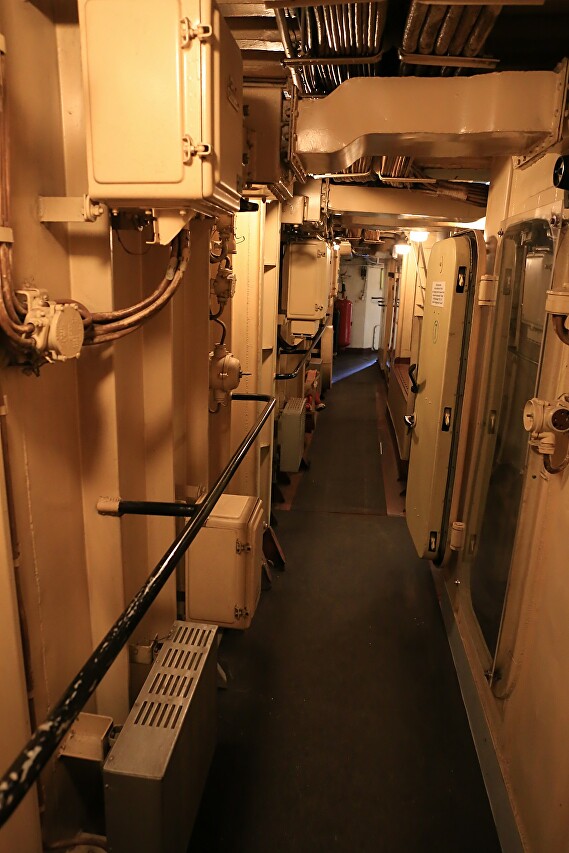
Above the engine room is a room with electrical and electronic equipment for missile launchers.
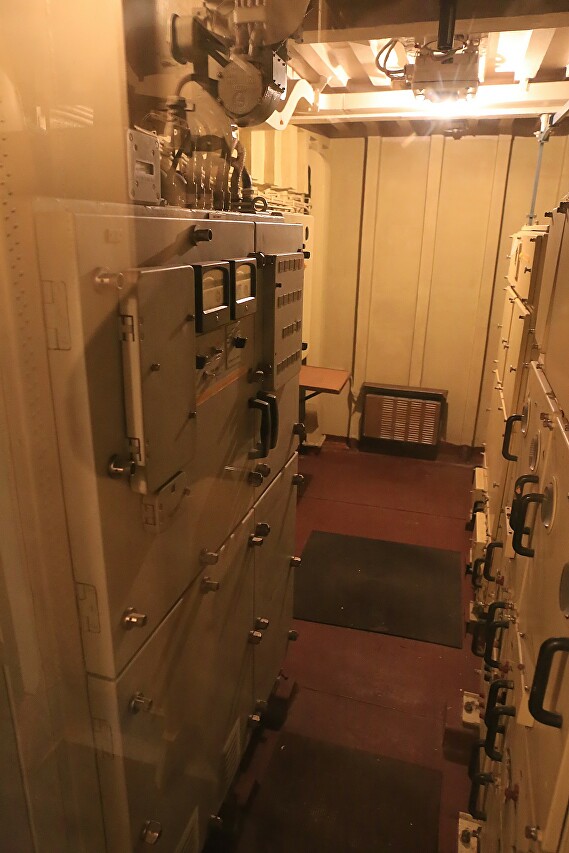
The aft part of the superstructure is occupied by a sanitary and hygienic room common to sailors and officers. There are three washbasins and a shower cabin.
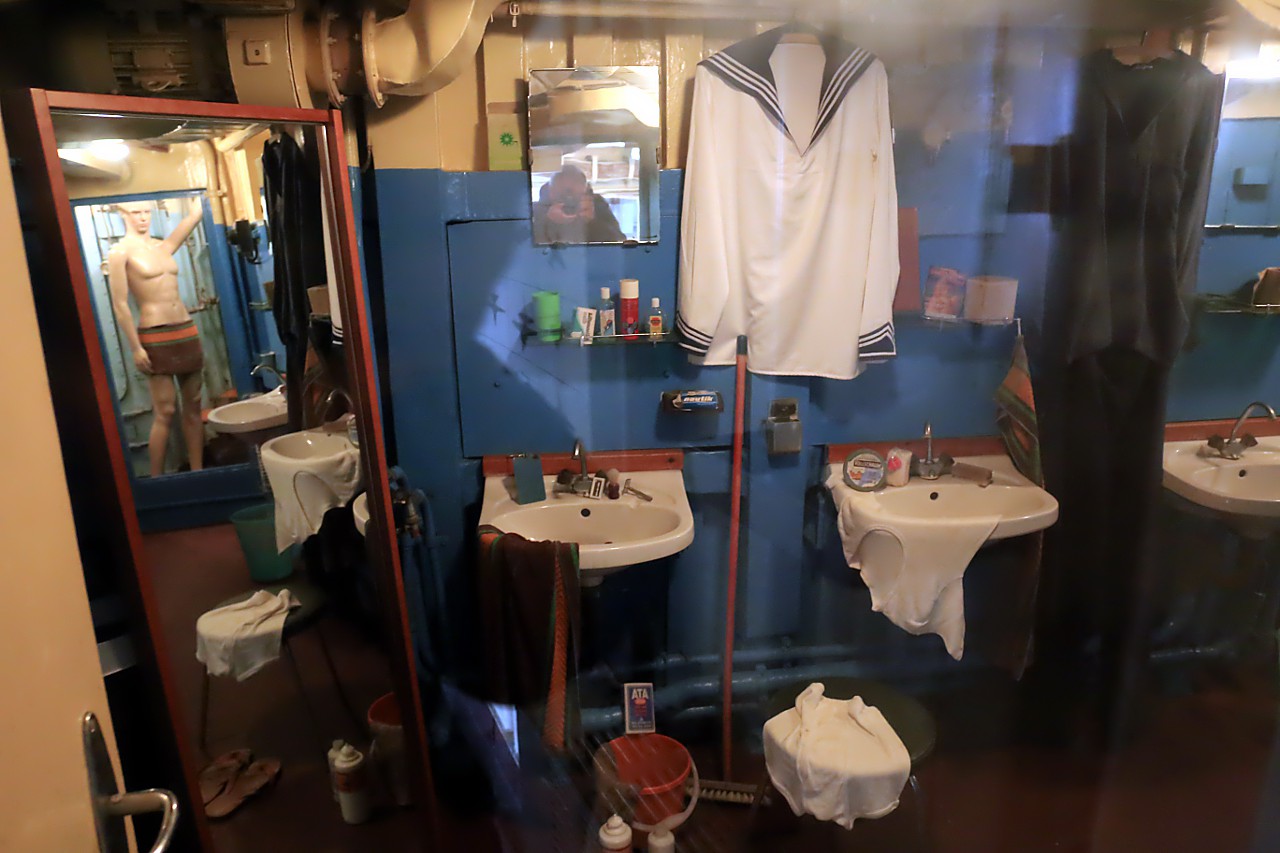
Behind the bulkhead is a headboard with a single toilet for the entire crew. A separate bathroom is available only in the commander's cabin.
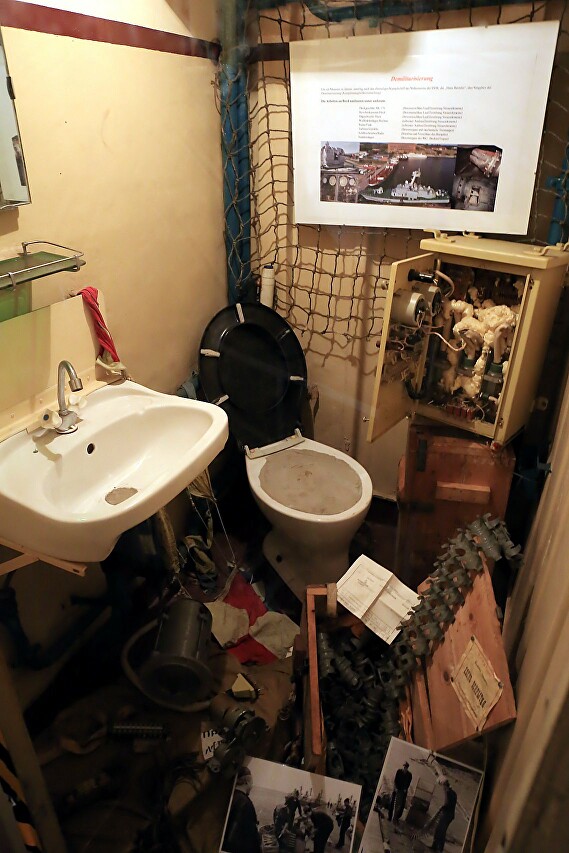
Here you can see samples of the uniforms of the sailors of the Soviet Navy and the People's Navy of the German Democratic Republic (Volksmarine).
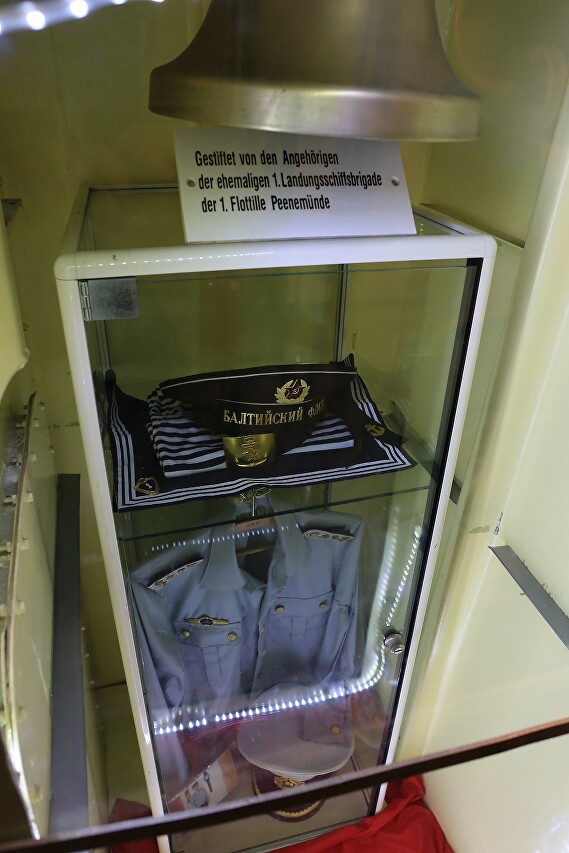
Another hatch to the engine room, below you can see the air intake channel of the afterburner turbine.

Deckhouse of alarm and fire extinguishing equipment.
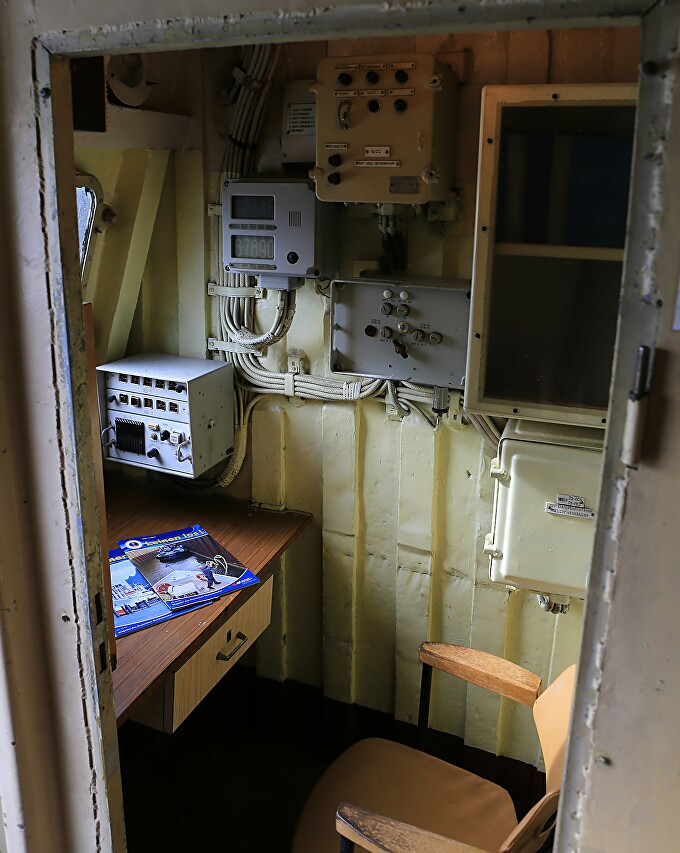
Diving equipment room. On any warship, there are crew members who have diving training. They regularly inspect the underwater part of the hull and, if necessary, carry out repairs. The most common case is the winding of fishing nets on propellers.
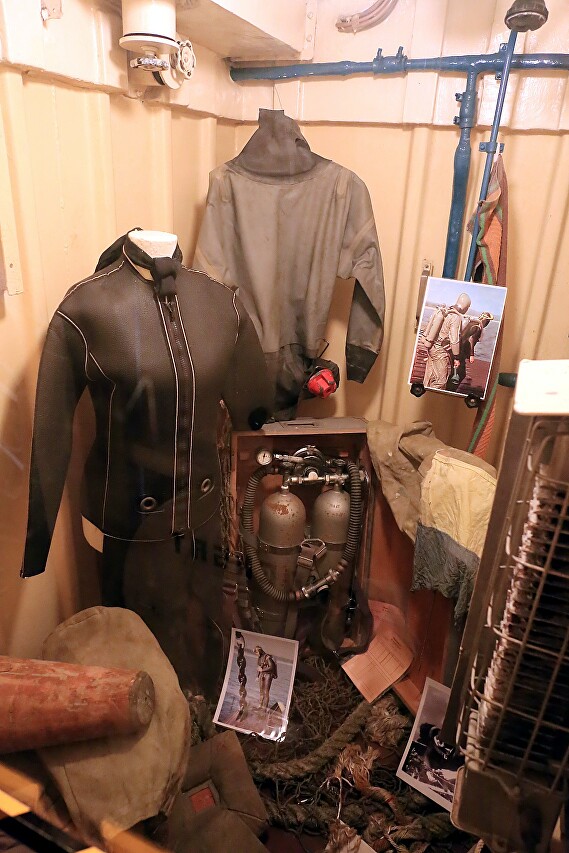
Two six-barreled 30mm AK-630 automatic cannons are installed on the aft part of the superstructure.

The guns have a rate of fire of 4-5 thousand rounds per minute, the projectile belt is fed through a flexible sleeve. The standard ammunition of the artillery installation is 2000 rounds.
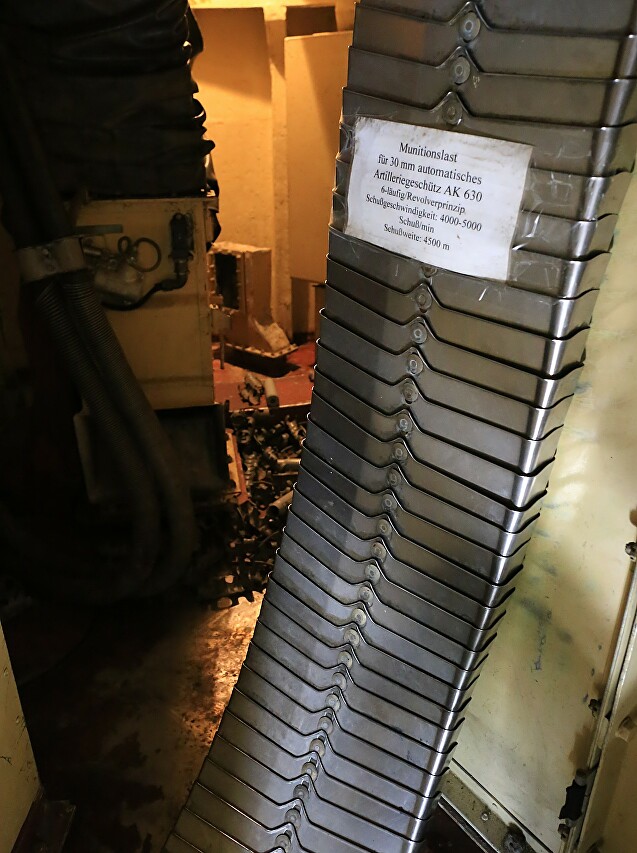
To combat air targets on the aft deck, there is also an anti-aircraft missile system "Strela", a camera for storing missiles to it is also located in the aft part of the superstructure.
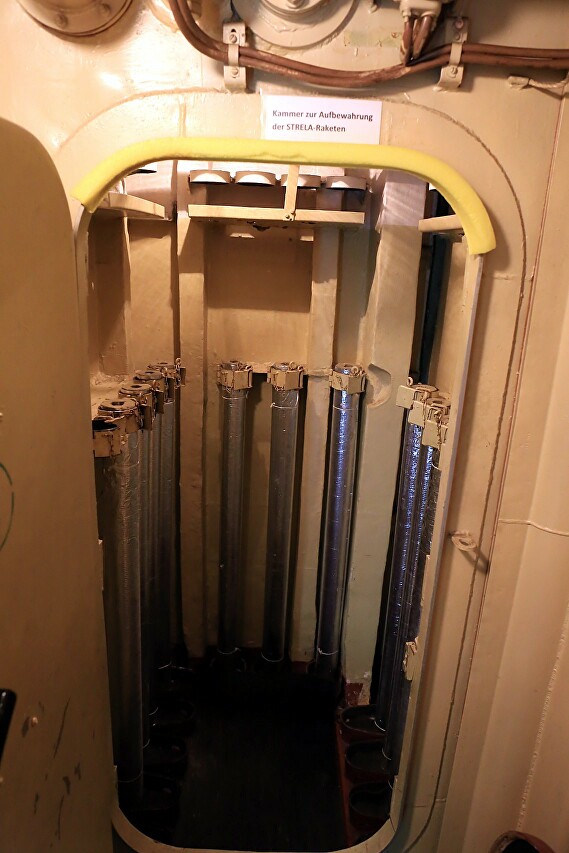
On the bulkheads, you can see a drawing of sections of a rocket boat.
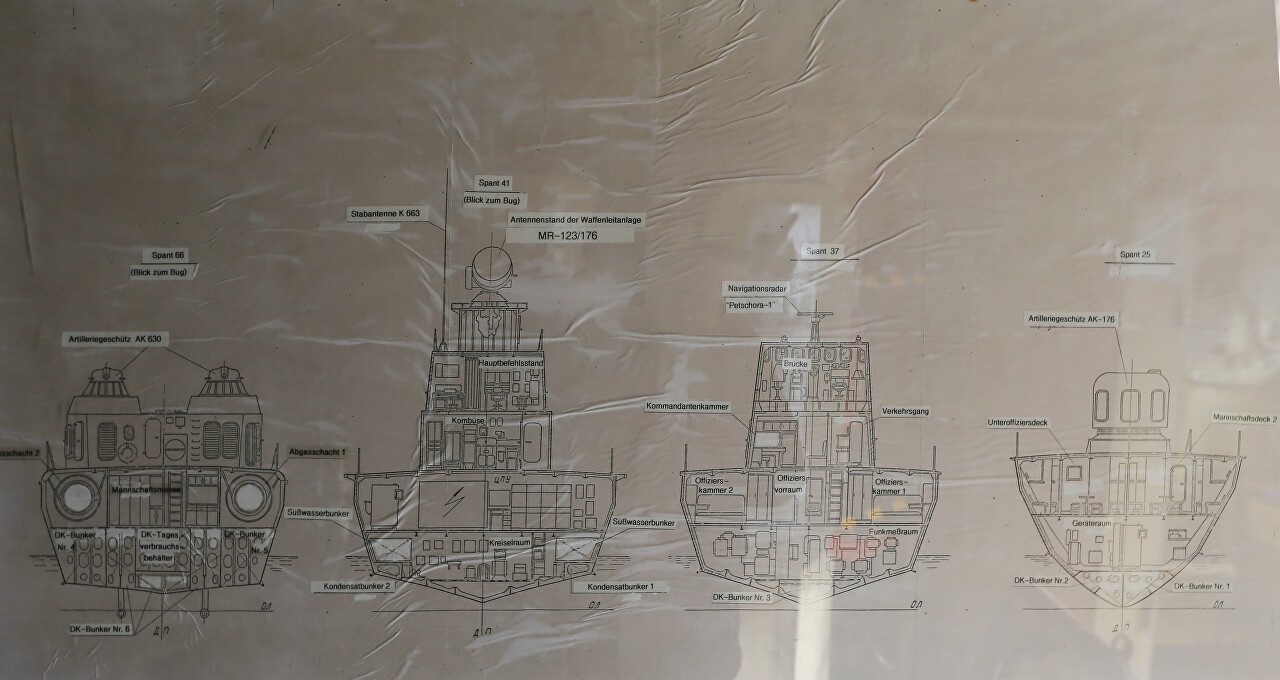
.Another table shows the silhouettes of aircraft and helicopters of NATO countries.

We go down again, in the very stern of the ship there is a crew dining room.

Only the sailors were allowed to eat here, and the officers were served in the mess hall.
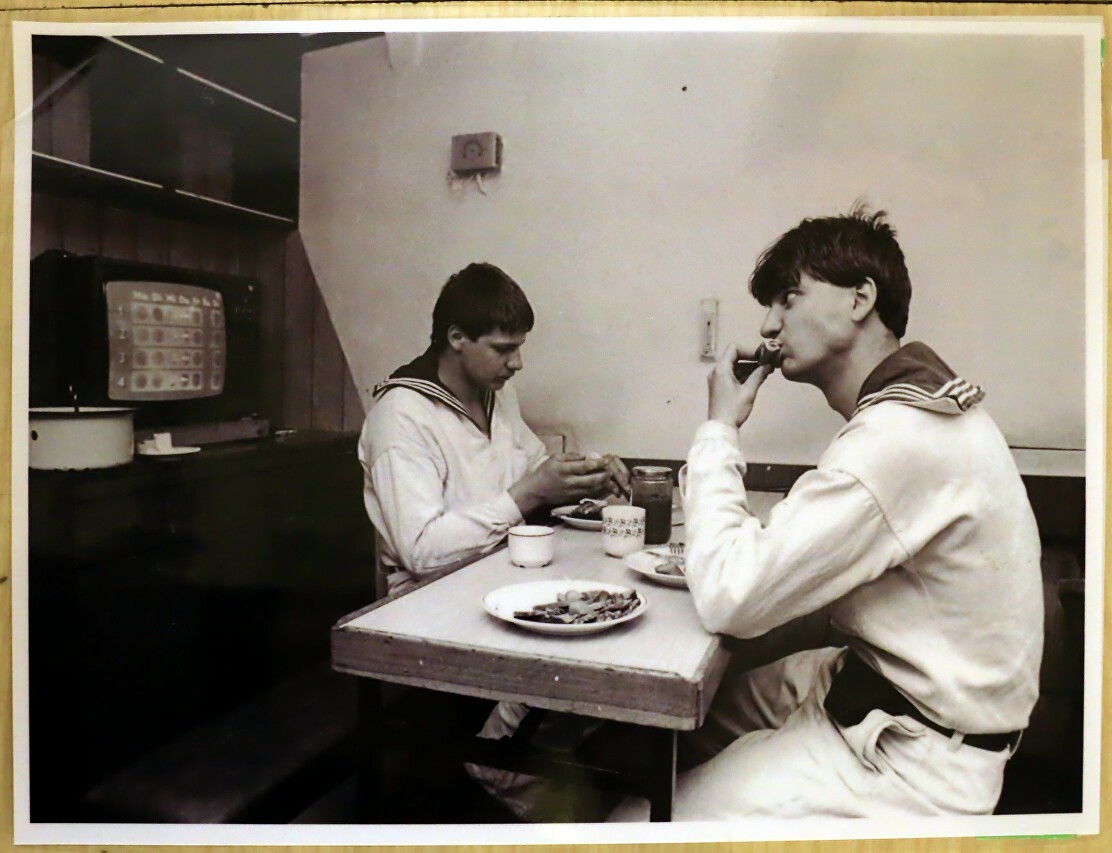
In the dining room, they not only took food, but also spent their free time from the watch and sleep. Here we see a color TV and a tape recorder made in the GDR.
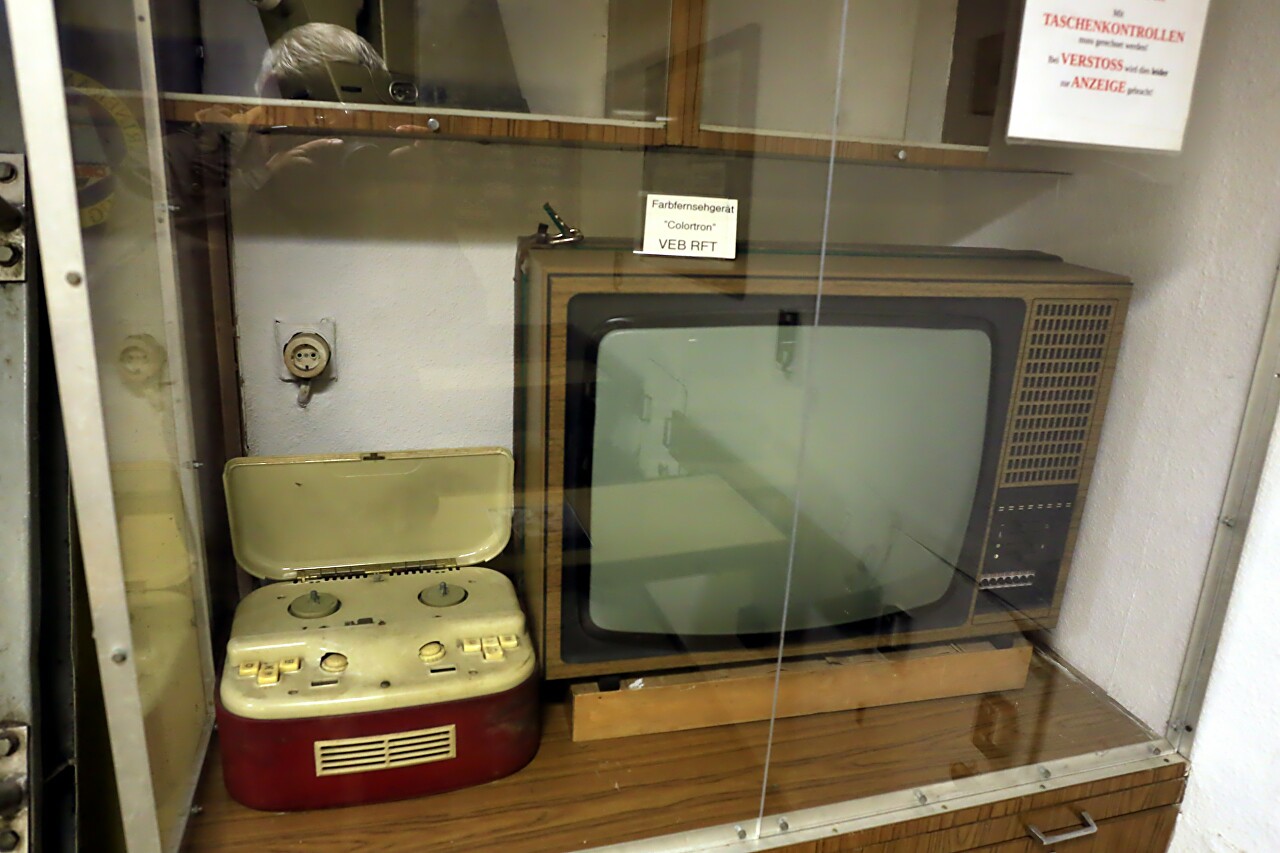
While eating and relaxing, the sailors were under the watchful eye of communist leaders, whose portraits still remind of the era of totalitarianism.
